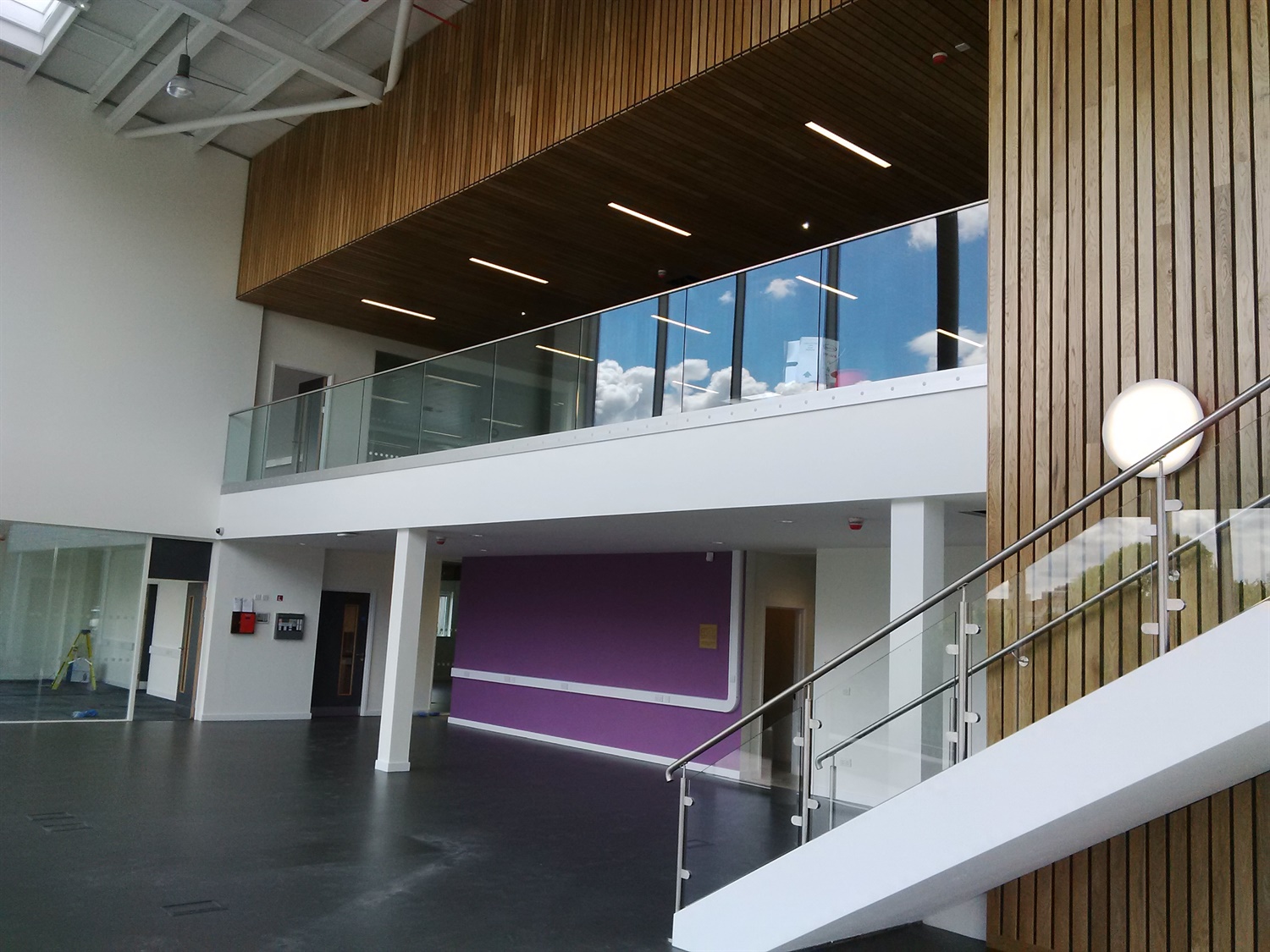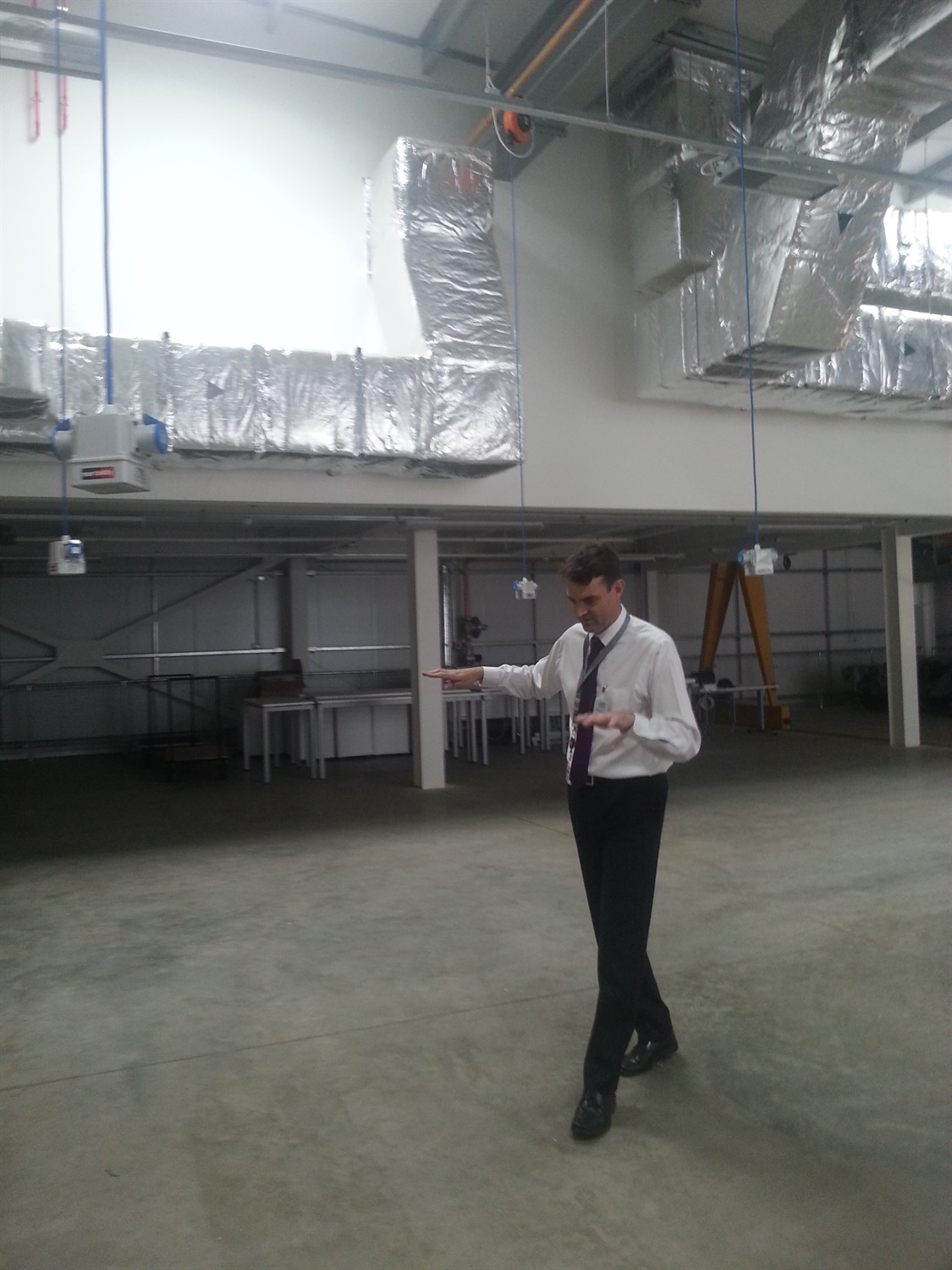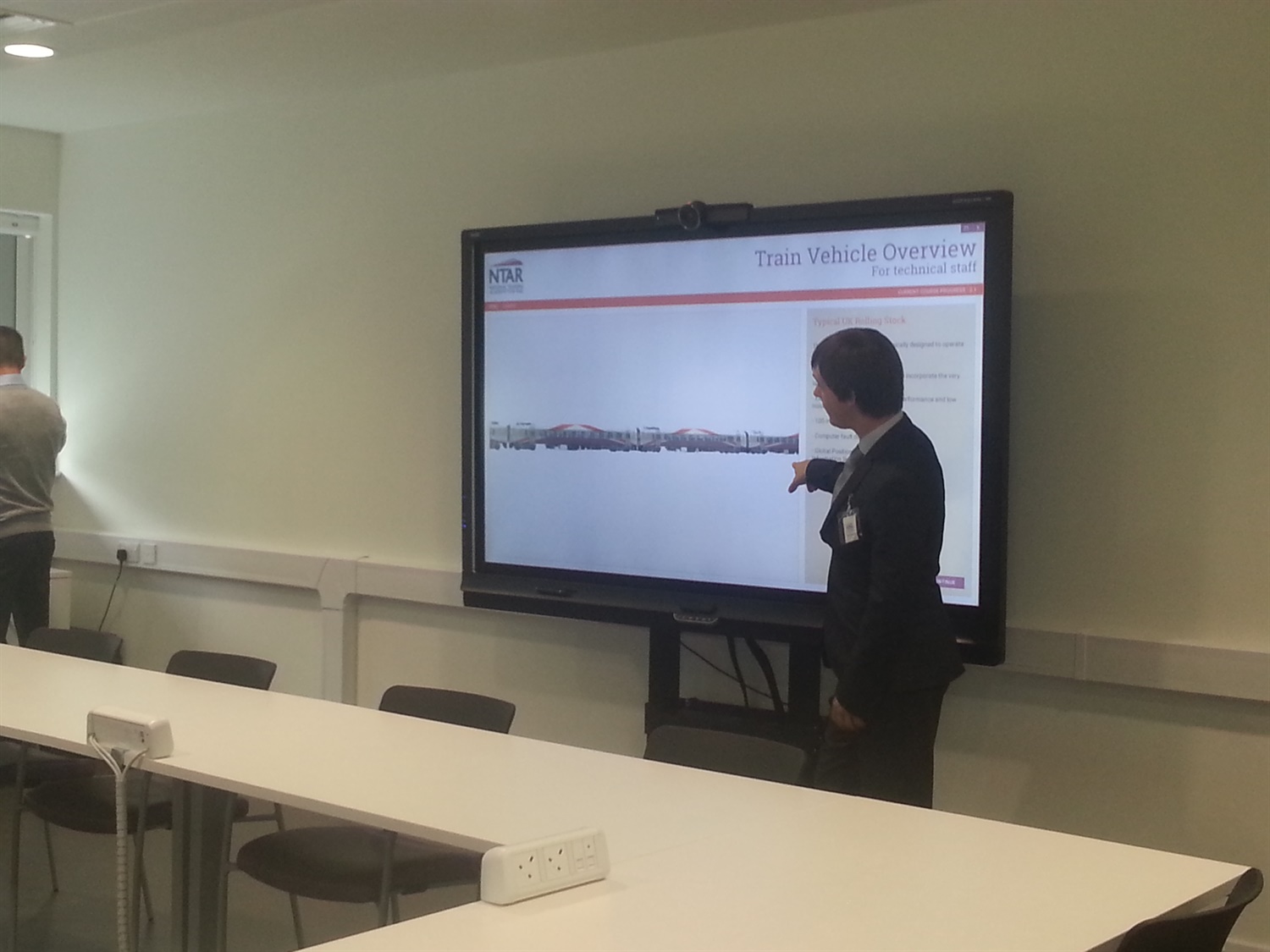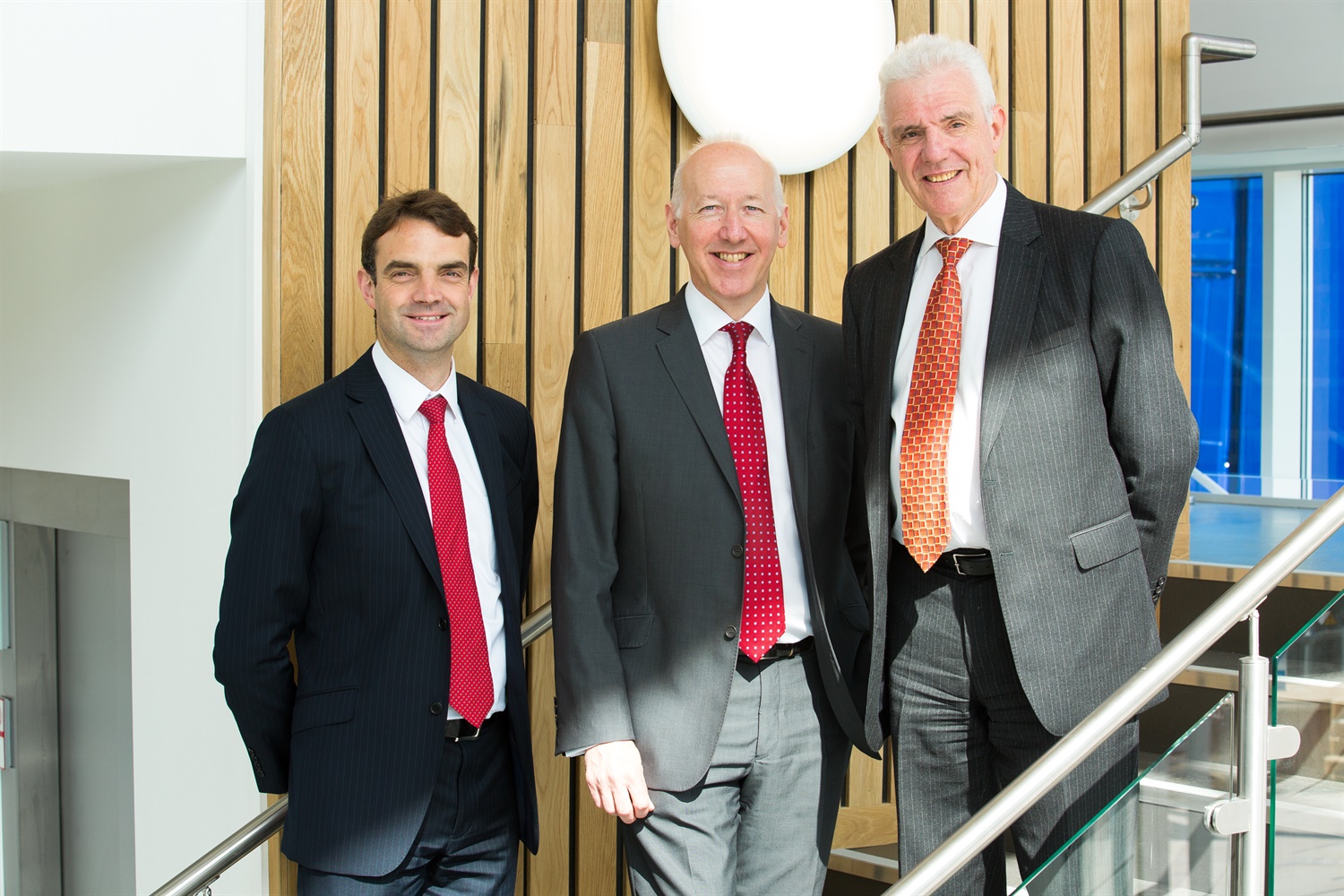01.08.15
Mind the gap: a look into the new National Training Academy for Rail
Source: RTM Aug/Sep 15
RTM’s Luana Salles was impressed with what she saw at NTAR, the new National Training Academy for Rail in Northampton. She met Simon Rennie, general manager of NTAR
The rail industry is in a skills crisis: much of its workforce is nearing retirement, young engineers aren’t motivated enough to join it, and training the staff that it does manage to poach from other sectors can take over a year and a half.
About 8,200 people are needed over the next 10 years to fill the skills gaps in this ageing industry, and even more will be required to work on major projects like HS2, New Tube for London and Network Rail’s growing workload of infrastructure projects.
The problem is especially acute in the traction and rolling stock sector, as has been frequently covered by RTM and organisations like the National Skills Academy for Railway Engineering (NSARE) in its ‘Skills Forecast’. Of the 14,500 engineers working on maintenance, overhaul and new-build trains, more than half are over 50 years old, while the number of engineers aged 25 or younger didn’t even amount to 1% of the rail talent pool.
With an average working age of 46 years, the replacement demand in the industry was proven to be high – and growing. The gap in the industry’s workforce was further worsened by the whopping gender disparity: 96% of rail engineers are men.
Apart from the potentially lucrative salaries in the industry – one of the few young rail engineers I have spoken to has just bought his first apartment, aged 23 – none of the other figures were looking up.
Unique rail perspective
The National Training Academy for Rail (NTAR) was created to find a way through this skills crisis. A £7m state-of-the-art building in Northampton, NTAR intends to take an urgently needed national and strategic approach to address skills shortages in the industry. The flagship hub is a joint public-private initiative between NSARE, BIS (the Department for Business, Innovation and Skills) and the DfT (Department for Transport), together with industry partner Siemens – whose depot is right next door. Siemens is using half of NTAR’s capacity itself, having put in half the funding to get it up and running. The other (publicly funded) half is for the wider rail industry across the UK.
 Inside the new academy's first floor.
Inside the new academy's first floor.
Its extensive catalogue of about 120 accredited courses, taught by a core team of in-house experts and qualified partners, seeks to work with all types of potential talent, from the young college graduate looking to become a rail apprentice to people working in other careers to existing rail staff who need further specialist training.
Simon Rennie, general manager of NTAR, sitting across from me in one of the many social hotspots in the two-storey building, told RTM: “From a traction and rolling stock (T&RS) perspective, we are unique in the market in terms of being a specialist centre. You won’t go anywhere in the UK and find an entity like ours, which is devoted to T&RS. There are a number of very good professional organisations who teach rail, but they will also have expertise in signalling or electrification or infrastructure. What sets us apart are the elements which are attached and devoted to the train itself.”
And, indeed, the NTAR family’s devotion to the ‘train itself’ is undeniable: with three classrooms, four technical rooms, an expansive training workshop, two assessment rooms and a study area, the Northampton hub offers a glimpse of the future digital railway.
 The training workshop, where an entire train will be available for hands-on practice.
The training workshop, where an entire train will be available for hands-on practice.
Bespoke training facilities
The training workshop – “where the magic happens,” Rennie said – was the first room I visited on my tour. Though specialist equipment is still being fitted, the workshop will accommodate, amongst other things, an entire train – entirely in line with NTAR’s hands-on, learn-by-doing philosophy. Trainees will be able to deconstruct a train to learn their way around how all the components work, from the bogie and internal doors right down to the wheelsets.
 Simon Rennie: "This is where the magic happens!"
Simon Rennie: "This is where the magic happens!"
“Imagine coming here when you’re 16 and it’s your first week in rail, and you can touch, you can feel, you can break, you can reassemble a train,” Rennie told us, clearly excited at the prospect. “You’ll get hands-on, real experience on real equipment instead of sitting in a classroom.”
The train components were made – and mostly donated – by different specialist manufacturers, but are far from niche, allowing trainees to apply the skills learned to any situation they come across in the future.
Just across from the workshop was one of the technical training rooms that will soon house an entire digital railway, provided by one of the academy’s partners, AlanDick Communications. The firm offered to build them an entire system integrating all the digital technology from stations and trains, including passenger and platform information systems, wi-fi and CCTV, as well as communications infrastructure. In time, this will also include a hybrid power unit outside with data feeds from National Rail Enquiries, such as Darwin, so trainees can configure passenger information systems and station signage.
On the other side of the wall was my favourite room, bookended by a touchscreen smartboard showcasing the side of a 3D train. Andrew Solesbury, creative director from touchscreen technology firm Pauley, was playing around with the train’s components – pulling levers and zooming into the wheels right down to working with individual nuts and bolts and bearings – to show what the programme could do.
Though the environment closely resembled a classroom, NTAR trainers tried to steer clear from the school atmosphere: “When we have to teach theory, it’s in a gamified world,” Rennie told us. “This isn’t meant to replace physical know-how – we’d do that in the training workshop – but by the time they go down there, they’ll have a good idea of what they’re doing. Plus, course content will be available in tablet format and on the NTAR website if trainees need a refresher.”
Jayne Lewis, manager of the NTAR training team, who co-writes course content, said they looked at the systems on a train, including generic subsystems that all train operating companies and maintainers would look at, in order to structure the theoretical courses taught through the touchscreen board. “You get the world’s most boring course – how to deal with nuts and bolts, which is very necessary but the most boring course – and make it interactive and engaging,” she said.
 Andrew Solesbury playing around with 3D train components in the touchscreen smartboard.
Andrew Solesbury playing around with 3D train components in the touchscreen smartboard.
In the corner of the room also sits a large virtual reality headset for further gamified, first-class technical training. All you can see around you when you put the goggles on is the cab, so as to give the user a nearly first-hand experience of how to drive a train.
Lewis said: “It gives them the basic underpinning knowledge they need to move forward. We’re going to use that more for the cab stuff – we have some cab communication courses that we’re working on. Most cabs have the same components in, they’re just simulated slightly differently, so we’re going to look at different cabs.” Trainees wearing the headset – of which an extra 16 have already been ordered – can interact with their virtually-simulated environment for a close-to-authentic driving experience.
All other classrooms follow this fundamental premise of first-hand practical experience, even when the course content is theoretical. The electrification room, for example, will be fitted with equipment including various panels of switchgear, an RTU battery charger to make the switchgear operate and communicate, and a selection of overhead line equipment, such as a 25 kV disconnector, cantilever, and rigid catenary.
Despite its many large technical spaces and classrooms, the building is far from cluttered, boasting large spaces packed with sofas for trainee gatherings and impromptu classes. Rennie explained: “We’ve deliberately clustered bits of furniture. Because we’ve got quite a paperless base, we’re not bound to the classroom environment to the same extent we might be if we were using lots of paper.
“Let’s say I’ve finished my doors course, and I’ve done the practical elements of it in the training hall, so I’m going to get cleaned up and go back into a classroom; I can meet my group of between six to 10 people and tutors down here [in the first floor open area] and download the course notes onto a tablet. These nice big open spaces have become useful, even from a teaching perspective.”
And the extra social spaces upstairs provide some places for people to congregate and meet up. “It’s become quite a social space, bringing people together,” he said. “There is also storage in the far corner, behind those double doors, so all of this area can be cleared out and you can convert into conference mode quickly.”
Cross-sectoral accreditation
Although NTAR offers a large selection of courses made even better through the bespoke on-site facilities, its team reiterated that its location should be far from an impediment. Neil Franklin, programme director at NSARE, working with NTAR, said: “You can move course material easily through technology if you make an investment in sufficiently high-end hardware. We’re giving ourselves every opportunity to deliver high-end content so people don’t see Northampton as a geographical restraint.”
Yet if rail trainees want to take advantage of the ultra-modern equipment available in the building, Rennie guarantees they can do as much or as little as they want. “You can spend four years here, you can spend half a day here. If you did one of the apprenticeship schemes, that would come with HNCs, BTECs or NVQs at different levels.
 “In the management leadership arena, we’re underpinned by the Chartered Management Institute (CMI), and EAL accredit our technical course base. Some of the courses are self-contained, so you can learn something very specific in a short timeframe, while other programmes are pieced together – if you’re an apprentice, though, it will take you three and a half years to get through a typical programme.”
“In the management leadership arena, we’re underpinned by the Chartered Management Institute (CMI), and EAL accredit our technical course base. Some of the courses are self-contained, so you can learn something very specific in a short timeframe, while other programmes are pieced together – if you’re an apprentice, though, it will take you three and a half years to get through a typical programme.”
The 120 courses in the catalogue – spread across technical areas, professional skills development, advanced technologies and leadership and management – are available upon request, specifically catered to the timetables of interested customers. As of now, the academy exists for three distinct types of people: the career changer who wants to come into rail through conversion courses, perhaps from the armed forces, aerospace or automotive industry; those already working within T&RS who need help upskilling in terms of telecoms or better standards of management and leadership; and those fresh out of college ready to be trained for four years and delivered as the next generation serving UK rail as highly-qualified professionals.
The latter is the case with NTAR’s first client, South West Trains, whose apprentices will embark on a 36-month training programme from October. The engineering apprentices will be cross-trained in a variety of subjects including BTEC level 3 and HNC level 4 electrical/electronic engineering and NVQ level 3 engineering maintenance. The programme’s administration, handled by NTAR, will span everything from framework registration, qualification provision, enrolment, college management, certification, scheme accreditation, Skills Funding Agency arrangements, and Ofsted preparations and measures.
 From left to right: Simon Rennie, NTAR's general manager, with collaboration partners Steve Scrimshaw, managing director of Siemens Rail, and Gil Howarth, then chief executive of NSARE.
From left to right: Simon Rennie, NTAR's general manager, with collaboration partners Steve Scrimshaw, managing director of Siemens Rail, and Gil Howarth, then chief executive of NSARE.
Palpable industry changes
And that is exactly where Rennie wants to be: when asked about what the future looks like, all he could talk about was 1 October. “I want to get to this day and deliver something that is fantastic, busy and relevant, and people come here and are delighted with what they receive, going away with great experience,” he said. “I think how we’re judged in terms of success [will be]: Can we deliver a model whereby we are producing a pipeline of well-qualified professionals and technicians who are genuinely, positively impacting those skills gaps? That’s what good looks like.”
In the long term, the NTAR team hopes to make a tangible difference to the worrying findings from their industry-wide analysis. Rennie sums it up well: if we were to redraw that skills gap graph in two or three years’ time, could you highlight what the ‘NTAR effect’ was? As the academy’s figureheads reiterated throughout the tour, we’ll all have to learn our way through the building to see what works and what doesn’t work in time – but the foundation is there, and it’s just a matter of time until we can close the gap.